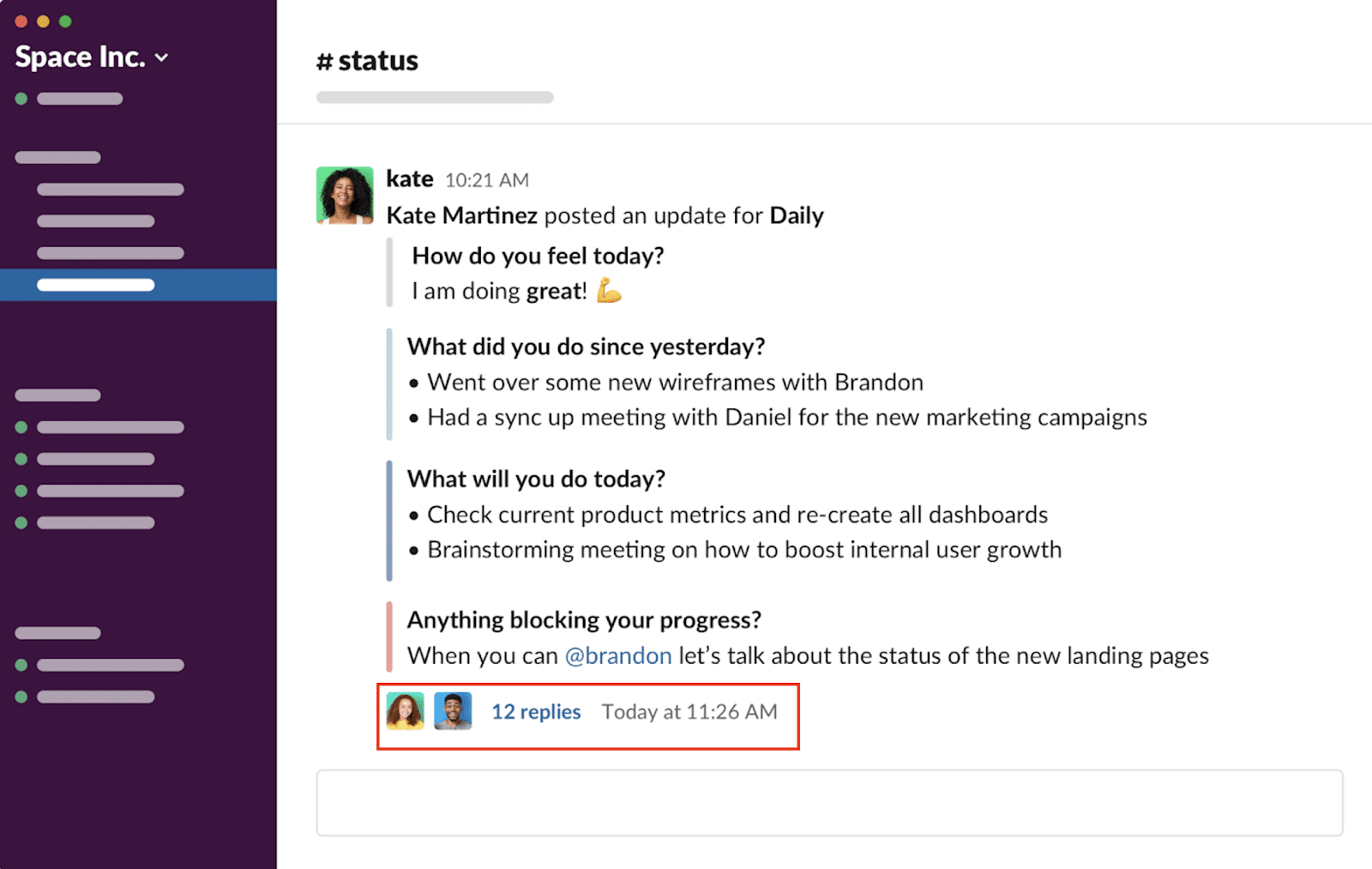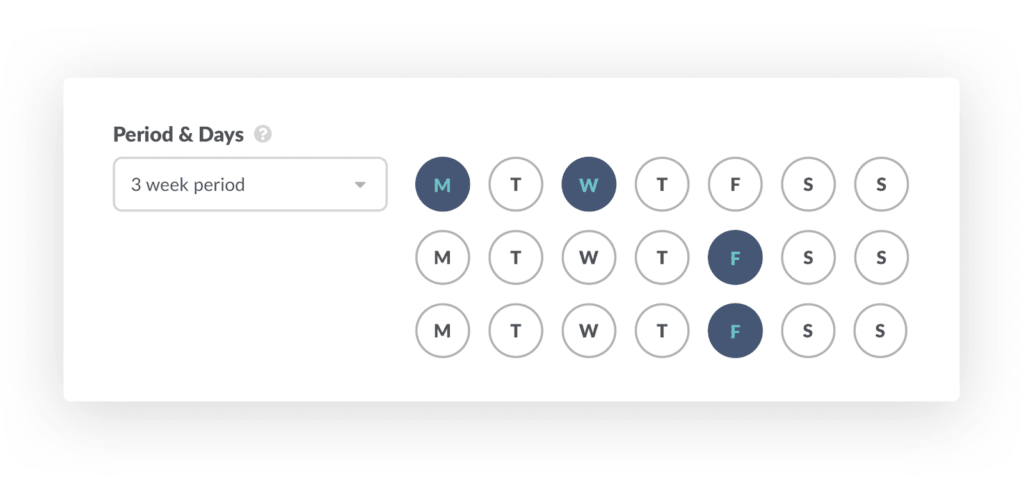Agile teams holding virtual daily standups via video face the same problems as teams that hold in-person daily standups — problems which lead to unproductive team meetings, disinterested developers, and an overall unproductive day.
For example:
- Virtual standups can easily get off track when developers start discussing how to solve blockers in real-time. What should be an efficient 15-minute get-together can grow into a much longer meeting, with 1-2 developers monopolizing the standup. Virtual standups via video chat do nothing to eliminate this very common standup problem.
- Virtual standups disrupt productivity and workflow. When you schedule an in-person standup, you’re scheduling a disruption to the workday. A virtual standup doesn’t make this interruption any less significant, since you still need to hop on a Zoom call despite the fact you may be mid-task.
- Different time zones and scheduling conflicts make it difficult to pick a standup time. It’s challenging to find meeting times that work for the entire team, especially for remote teams working out of different locations. Someone is always hopping on the call at the end of their day or in the early hours before their day has even started.
- Team updates in virtual standups are often unrelated to your own work. If you’re logging on Zoom every day for 15 minutes (assuming your standup doesn’t go over the allotted time) just to hear other attendees give status updates unrelated to the tasks you’re currently invested in, you quickly realize you’re wasting time, and morale goes down.
We’ve experienced these issues first-hand when running our own virtual daily standup meetings. We quickly learned the traditional way of doing the daily scrum wasn’t going to work and we needed something new; an online standup meeting bot.
That’s why we made Geekbot, an asynchronous meeting tool that integrates with your team’s Slack account.
Asynchronous virtual standups solve the problems listed above — both for distributed teams and collocated teams — and also come with other benefits, which we discuss below.
Note: If you’re looking for an alternative to your unproductive video standups, try Geekbot, our Slack-integrated asynchronous tool that helps remote workers improve communication and stay on task — learn more or sign up for a free 30 day trial.
How to Run Effective Daily Virtual Standups in Slack
Geekbot can help your Scrum team run more effective standups in several ways.
1. Geekbot Replaces Unproductive Standups with Streamlined, Asynchronous Communication
Every day, each member of your development team gets a Slack message from Geekbot, asking them the 3 standup questions.
Note: The specific set of questions (including the number of questions) you ask your team can be modified.

The questions go directly to each appropriate team member through a direct message. The answers are then shared in a designated Slack channel.

This means developers can catch up on what everyone is doing without having to be on a long, meandering video call.
If someone is experiencing a block that needs the attention of another team member, they can mention that person in their answers and Geekbot notifies that person.
For example, in the fictitious example below, Kate tagged Brandon about how the new landing pages are blocking her progress.

This mention sends Brandon a notification, and now he can engage in a threaded discussion with Kate.
The daily standup stays on course — so the rest of the team aren’t waiting for Kate and Brandon to solve this obstacle — while Kate and Brandon work together.
By keeping those problem-solving conversations in threads, Geekbot eliminates the risk of your virtual standup getting off task or taking longer than a standup ought to take.
2. Geekbot Uses Asynchronous Communication to Eliminate Scheduling Conflicts
With an asynchronous standup tool, your remote team doesn’t have to navigate conflicting calendars and various time zones.
Because Geekbot integrates with Slack, you can set it up to reach out to your team members at a specific time.

Plus, you can customize Geekbot’s notifications per user and per day. For example, if one of your remote developers only works four days a week, then you’d set it up so on those four days they get a Geekbot notification asking them to answer the daily standup questions.

3. Geekbot Minimizes Workflow Interruption
Even when you pick your own time to get a Geekbot notification, life still happens. 9:00 am might be the ideal time for a check in most of the time, but you may have a day where at 9:00 am, you’re in the middle of a coding project and don’t want to take a break or you had to take an impromptu call with a Senior Designer that can’t be rescheduled.
If you were doing a synchronous virtual standup via video, the interruption to your daily productivity would be significant.
Instead, when you get a Geekbot notification telling you it’s time to fill out your daily standup update, you can actually hit snooze if the timing isn’t right.
You can set up how to manage your Geekbot reminders (see below).

You can set smart reminders which tells Geekbot to adapt its notifications to when you’re more likely to respond or you can use manual reminders, which follow up with you after a predetermined amount of time.
With this feature, your virtual standups are minimally invasive to your workday, as they should be.
Additional Benefits to Using an Asynchronous Standup Tool for Your Virtual Standups
As we discussed, many agile teams struggle to hold virtual daily standups via video because standups can get off topic, quickly become unproductive, and are difficult to schedule.
We started holding asynchronous standups, and eventually made our own asynchronous meeting tool. It quickly eliminated those common video standup concerns, and then also benefited our team in other ways.
Increased Transparency and Team-Building
Unlike synchronous virtual standups, asynchronous meetings, like the ones held when using our Slack-integrated tool, come with a written record of what was presented.
This reduces the risk of miscommunication or “he said, she said” problems. Everyone’s answers to the daily standup questions are posted in a public Slack channel. From a project management angle, this makes it easy for your team to review responses when it’s convenient for them.
And because your developers are going to be reviewing these updates when it’s convenient for them, they’re more likely to be engaged and proactive when it comes to helping their remote team members solve any impediments.
Access to Archives of Past Standups
Because our virtual standups are run in Slack, you can use Geekbot to search through previous standups.
This is helpful for project managers and Scrum masters who want to see what certain developers are working on.
For example, if a developer has constantly had the same task on their docket for the past week, yet never expressed any concerns or blockers, you can reach out and inquire about the status and what can be done to help them complete their task.
When you’re doing retrospectives, you can also use Geekbot’s searchable archives via the dashboard to see what, if any, breakdowns in communication contributed to a less than successful launch.

How Else Can You Use Geekbot?
While many teams utilize Geekbot to run virtual daily standups, our own team and many of our 100,000+ users also use it to run asynchronous, in-Slack retrospectives, surveys, polls, and any type of remote work check-in that is more convenient and productive via Slack rather than video call.
We discuss many of Geekbot’s other features in the post below, and share how it can facilitate effective, asynchronous team collaboration:
How We Use Geekbot to Manage Our Own Distributed Team From Slack
Final Thoughts
In our experience, you can’t hold better virtual daily standups if you’re still relying on synchronous communication, because the problems that you encounter with face-to-face scrum meetings will follow you to standups held over Zoom, Google Hangouts, or any other virtual conferencing platform
The issue is in how we communicate, so we built an asynchronous software tool to help us hold better virtual standups for the whole team.
With Geekbot, your virtual daily standups will:
- Be more productive
- Be easier to schedule
- Be less disruptive to your work day
Frequently asked questions
What is the purpose of daily standup meeting?
The purpose of a daily standup meeting is for team members to share their current progress and detect any roadblocks to their future progress. At the same time, daily stand-ups effectively facilitate collaboration between team members, reduce the number of unnecessary meetings, and improve team transparency and trust.
Is daily standup necessary?
If your team follows the Agile Scrum framework, then daily stand-ups are necessary as they are one of the vital scrum ceremonies that constitute the framework. If, however, your team does not follow any agile framework, daily stand ups are optional. However, it’s strongly recommended to have daily stand ups as part of your workflow for their many benefits.
How do you run an effective daily stand up meeting?
To run an effective daily stand up meeting, a few rules should be followed. First, there’s a strict time limit, and any daily stand up meeting should be finished in under 15 minutes. Second, no other people have a voice during stand-up meetings apart from Scrum team members and Scrum Masters. Finally, to keep stand-ups engaging and fun consider adding one ice-breaker question at the beginning or try asynchronous stand-ups.



